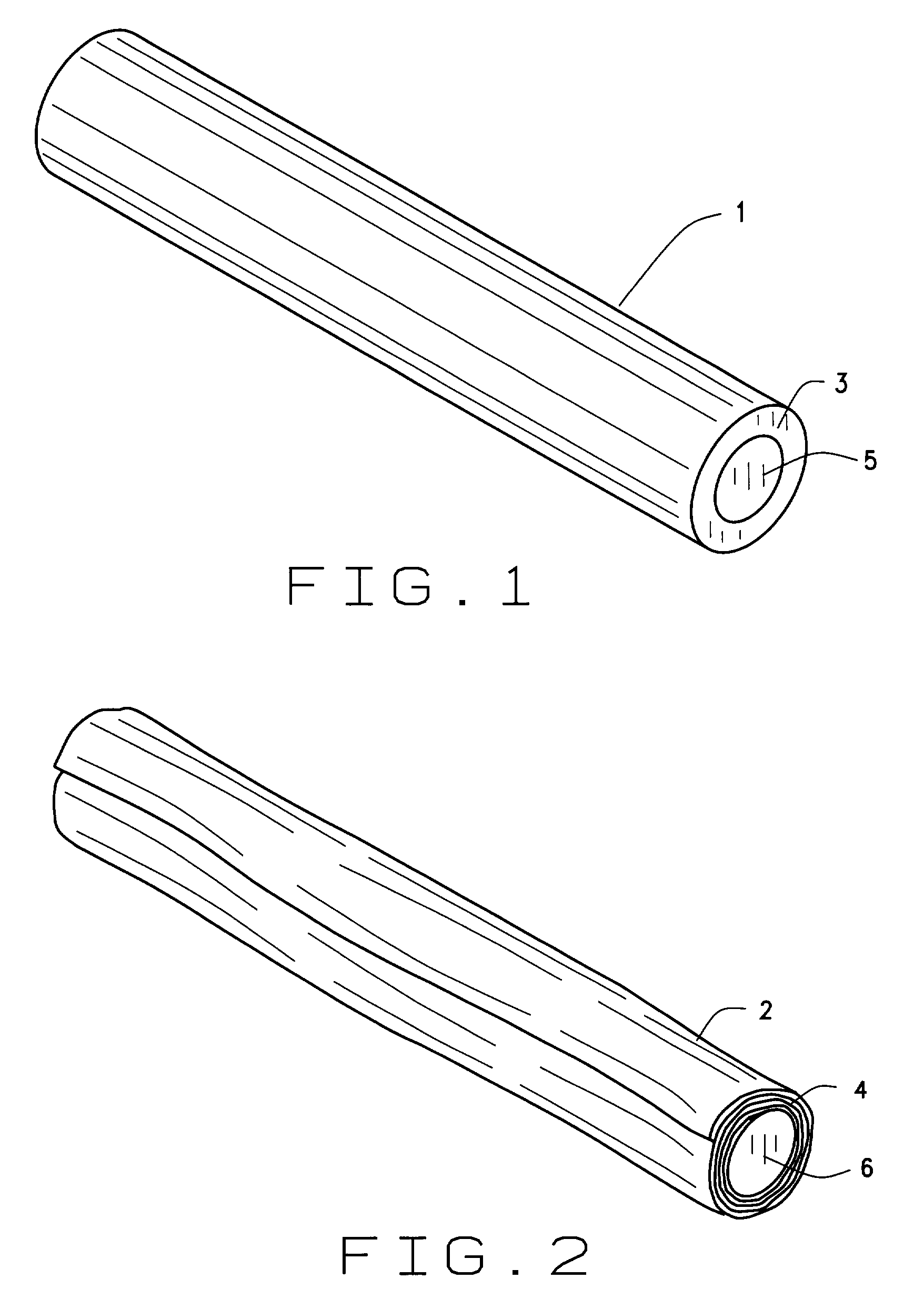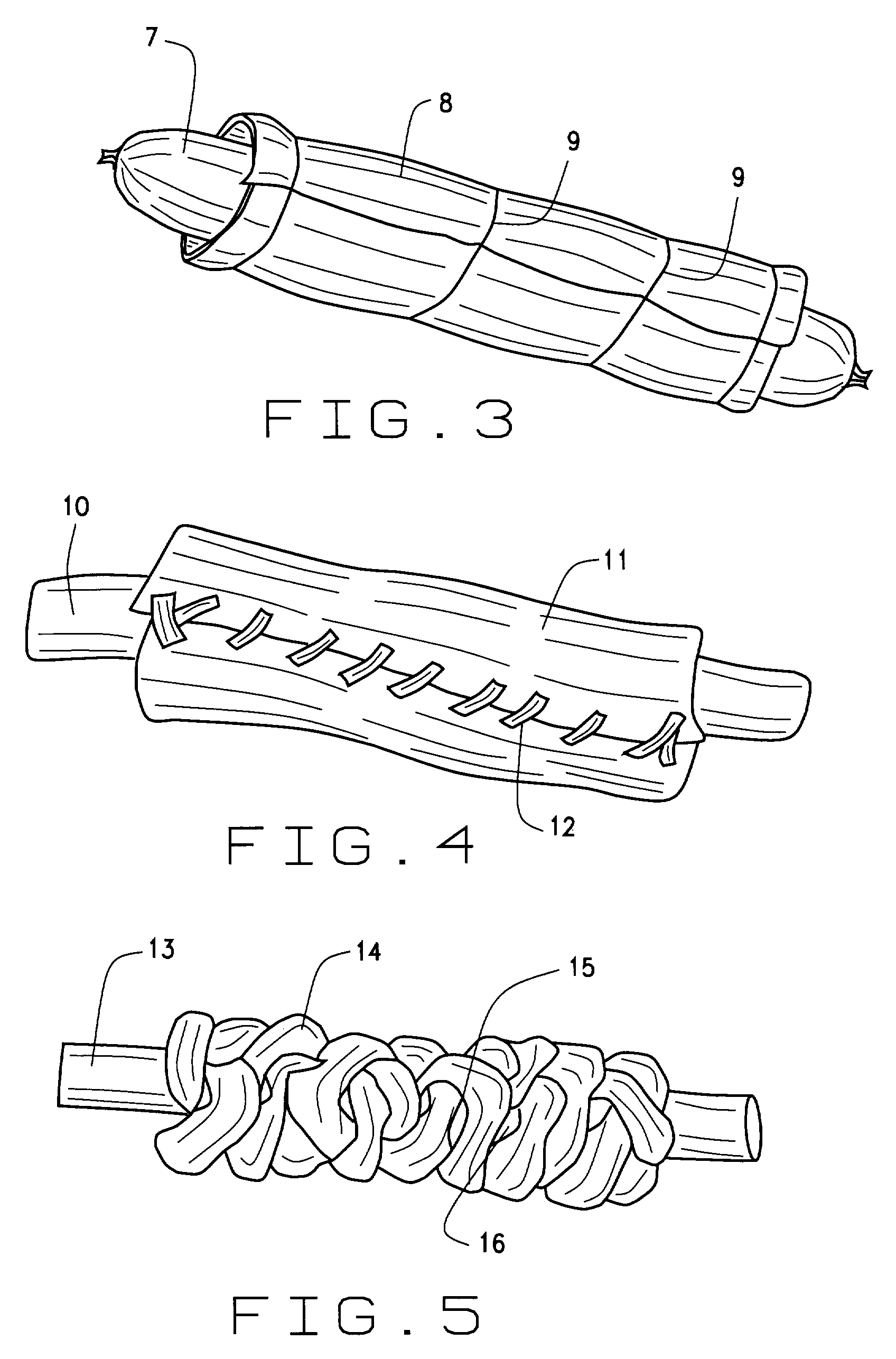Combination rawhide and formulated food pet chew
a technology of which is applied in the field of combination rawhide and formulated food pet chew, can solve the problems of long chew life, less palatable basic rawhide, and more fragile products than the early stages of jerky, so as to control both the toughness of the product and the overall palatability, and increase the chew life. , the effect of increasing the palatability of the produ
- Summary
- Abstract
- Description
- Claims
- Application Information
AI Technical Summary
Benefits of technology
Problems solved by technology
Method used
Image
Examples
example 2
A liquid meat slurry is prepared utilizing the following ingredients:
The ingredients are mixed together at room temperature under moderate agitation to form a homogeneous slurry. The rawhide sticks or rolls are capped at one end and aligned vertically. A depositor is used to deposit the slurry into the cavity of the rawhide pieces. The product is then run through a conveyor oven with a sufficient time and temperature to cause the meat slurry to be heated to a temperature sufficiently high to cook the meat fraction and coagulate the egg. We have found the best results in terms of product firmness if the interior temperature is at least 180.degree. F. The egg fraction serves as a binder to maintain the aqueous portion of the meaty filling in a bound state and prevent long-term migration of moisture to the rawhide shell. The meaty filling was found to have a water activity below 0.85 and thus be microbiologically stable. Long term stability testing of the finished rawhide chews showed ...
example 3
A meaty filling is prepared utilizing the following ingredients:
This formulation was mixed and stuffed into an edible collagen casing 21 mm in diameter. The sticks were then cooked in a conveyor oven at 225.degree. F. with a retention time of 8 minutes. The long ropes were then cut into 6" long sticks. These sticks were then incorporated into the cavities of the rawhide rolls and sticks described in the earlier embodiments of this invention. This can be done by three alternative methods. The easiest is to simply insert the finished sticks into the rawhide cavities. A second alternative is to wrap wet rawhide sheets around the preformed sticks and dehydrate the combination product for such time and temperature parameters to reduce the moisture content of the rawhide fraction to about less than 8%. A product produced by this method is indicated in FIG. 3. A third alternative is to sew a wet sheet or rawhide around the preformed stick and dehydrate as indicated above. An example of thi...
example 4
While specific embodiments of the invention have been described, those skilled in the art will recognize that a wide range of modifications could be accomplished within the framework of this invention. For example, various ingredients set forth in the examples, may be varied, changed, as required, for the particular mixture of meaty and protein products formulated as filling material. For example, a miscible agent, such as Tween, may not be required for a particular formulation, or food coloring may not be necessary, or even citric acid may not be required. These are just examples of where minor variations may be made to the formulations for these pet food products. Therefore, the variations or modifications to the subject matter of this invention may occurred to those skilled in the art upon reviewing the disclosure of this invention, and yet be within the scope of any claims allowed. The description of the preferred embodiments, and particularly as shown in the drawings, are set f...
PUM
 Login to View More
Login to View More Abstract
Description
Claims
Application Information
 Login to View More
Login to View More - R&D
- Intellectual Property
- Life Sciences
- Materials
- Tech Scout
- Unparalleled Data Quality
- Higher Quality Content
- 60% Fewer Hallucinations
Browse by: Latest US Patents, China's latest patents, Technical Efficacy Thesaurus, Application Domain, Technology Topic, Popular Technical Reports.
© 2025 PatSnap. All rights reserved.Legal|Privacy policy|Modern Slavery Act Transparency Statement|Sitemap|About US| Contact US: help@patsnap.com


